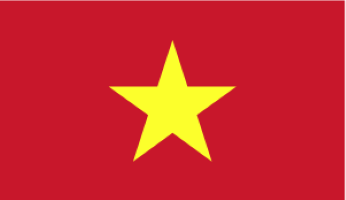In 2025, the rice export industry is expected to face challenges due to a significant increase in global rice production, particularly from India, Egypt, and other major exporting countries. This surge is likely to drive down global rice prices, placing considerable pressure on Vietnam's export revenue.
Overview of the World Rice Market in 2025: Notable Changes
As we enter 2025, the global rice market continues to experience significant fluctuations. The remarkable achievement of the Vietnamese rice industry in 2024—exporting 9 million tons for the first time and earning nearly 6 billion USD—represents a 10.6% increase in volume and a 23% increase in value. This success has laid a strong foundation for further progress in the industry.
In 2024, rice exports reached record highs in both volume and value.
Notably, the average export price of rice increased by 16.7% compared to the previous year, marking an unprecedented milestone after 35 years since Vietnam entered the global rice market.
Analyzing this result, Mr. Nguyen Ngoc Nam, Chairman of the Vietnam Food Association, stated: "The rice market in 2025 will be very difficult to predict due to a significant increase in supply from major exporting countries. However, Vietnam still holds many advantages, provided it can effectively leverage and promote them."
Vietnam will face greater challenges in 2025 compared to 2024, as the global rice supply is expected to become more abundant.
It is expected that in 2025, the market will continue to be impacted by climate change, supply chain disruptions, and increasingly fierce competition from major players.
Double Challenges for Vietnamese Rice: The Return of India and the Strong Rise of China
India, having lifted its ban on exporting non-basmati white rice, has re-entered the market with a position that cannot be overlooked. Specifically, since the end of September 2024, the prices of 5% and 25% broken rice from Vietnam have decreased by 15–50 USD per ton. With the advantage of abundant supply and competitive prices, India continues to dominate traditional markets such as Africa and the Middle East.
Rice Cultivation in India
However, another formidable challenge comes from China, which has recently increased its rice exports after years of focusing on domestic production. With a market expansion strategy and strong government support, Chinese rice is now directly competing with major exporters, including Vietnam.
Vietnam's Rice Exports: How to Maintain Its Position?
The challenges mentioned above create a difficult question for the Vietnamese rice industry: How can it maintain market share and overcome "heavyweight" competitors?
The race in the rice industry today is not only about quantity but also quality, branding, and adaptability. Vietnam must prove that its rice is an irreplaceable product on international dining tables.
In addition to India and China, Thailand’s market also poses new challenges. To stay competitive, Vietnam must increase the value of its rice through investment in quality, market diversification, and national rice brand positioning. This is not merely a price war; it is an opportunity for Vietnamese rice to affirm its solid position in the hearts of global consumers.
Global Trends and the Need for Sustainable Development
In the rapidly changing global rice market, it is not just an option but a necessity for Vietnam—one of the leading rice exporters—to participate in sustainability efforts to maintain and enhance its position.
The threat of increased floods and droughts also poses risks to rice production.
As the world faces significant challenges such as climate change, population growth, and geopolitical instability, the demand for food—especially rice—continues to rise. Major markets like Europe and North America are increasingly seeking products that meet "green" standards, free from toxic chemicals, and produced through environmentally friendly methods.
To meet these growing demands, Vietnam needs to:
Apply modern farming methods, such as reducing water usage, limiting chemical fertilizers, and incorporating more organic solutions.
Ensure transparency and traceability throughout the production process, from field to table.
Strengthen efforts to communicate the image of Vietnamese rice in key international markets.
By continuing efforts and adopting the right strategies, Vietnam can not only overcome these challenges but also turn them into opportunities, making rice a point of pride for the nation on the global stage.








